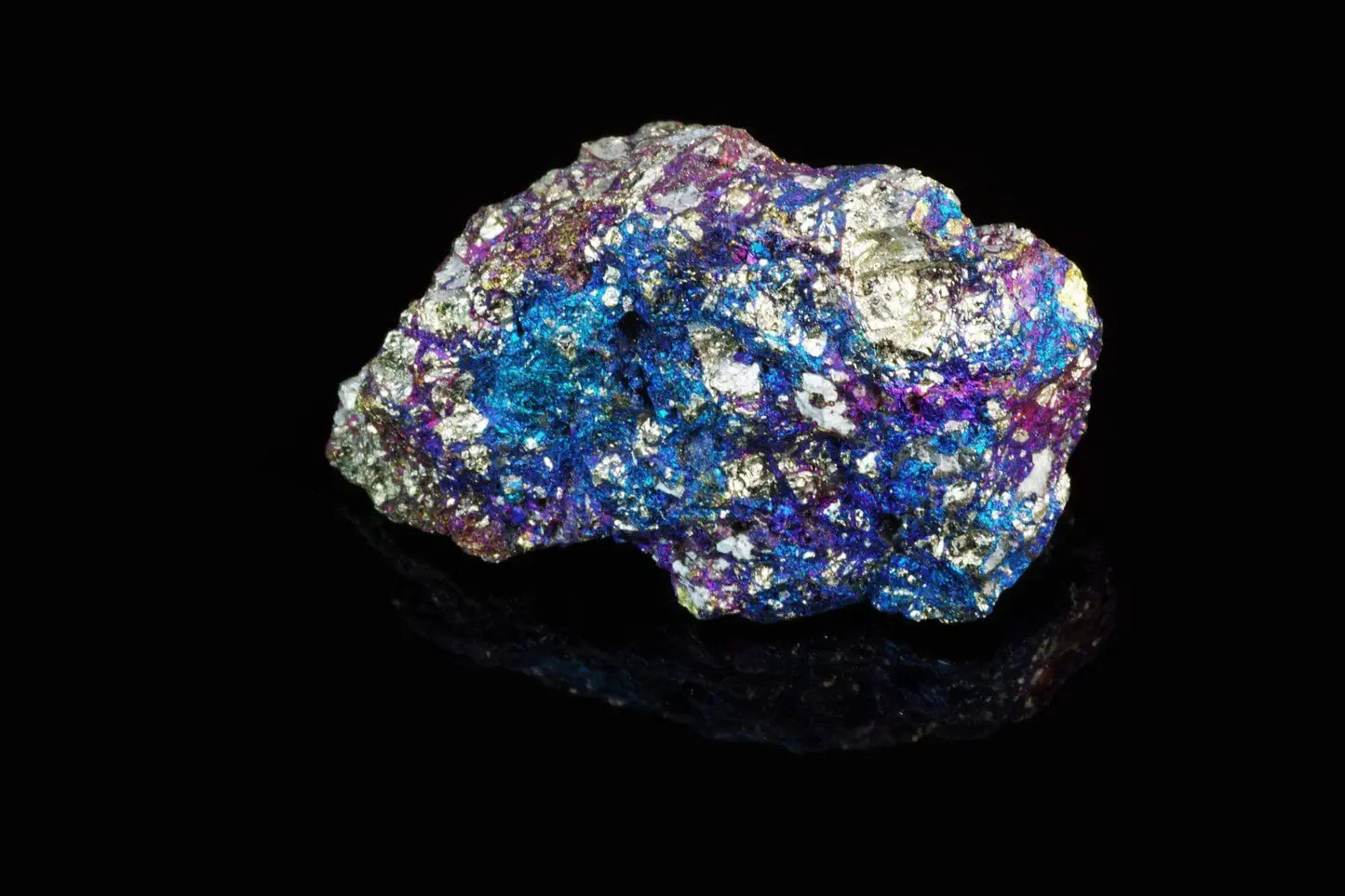
Bornite, also known as peacock ore, is a copper iron sulfide mineral with a dazzling array of colors. But what makes bornite so special? Its vibrant hues, ranging from purple to blue to green, make it a favorite among mineral collectors. Did you know that bornite is not just pretty but also an important copper ore? This mineral is often found in hydrothermal veins, contact metamorphic rocks, and in the enriched zone of sulfide copper deposits. Interestingly, bornite's color changes when exposed to air due to oxidation, adding to its allure. Want to learn more? Here are 50 fascinating facts about this captivating mineral that will leave you amazed!
Key Takeaways:
- Bornite, also known as peacock ore, is a colorful mineral composed of copper and iron sulfide. It forms in various geological settings and has practical uses in industries like electrical wiring and jewelry.
- Bornite's iridescent tarnish gives it a unique and striking appearance, making it popular among mineral collectors and artists. Its formation and presence can also indicate the potential for larger copper deposits nearby.
What is Bornite?
Bornite, also known as peacock ore, is a sulfide mineral with a unique iridescent tarnish. This mineral is highly sought after by collectors and geologists alike due to its striking colors and interesting properties.
- Bornite is primarily composed of copper and iron sulfide.
- It was named after the Austrian mineralogist Ignaz von Born.
- The mineral's chemical formula is Cu5FeS4.
- Bornite is often found in hydrothermal veins and contact metamorphic rocks.
- It has a metallic luster and a brownish-bronze color on fresh surfaces.
- When exposed to air, bornite tarnishes to an iridescent purple, blue, and green.
- This tarnish gives bornite its nickname, "peacock ore."
- Bornite has a Mohs hardness of 3, making it relatively soft.
- It has a specific gravity of 5.0 to 5.1.
- Bornite is an important copper ore, often mined for its copper content.
Where is Bornite Found?
Bornite can be found in various locations around the world. Its presence in different geological settings makes it a fascinating subject for study.
- Significant deposits of bornite are found in the United States, particularly in Arizona and Montana.
- It is also found in Canada, especially in British Columbia.
- Bornite occurs in Chile, one of the world's largest copper producers.
- Other notable locations include Australia, Peru, and Mexico.
- In Europe, bornite can be found in countries like Austria and Germany.
- It is often associated with other copper minerals like chalcopyrite and chalcocite.
- Bornite can also be found in sedimentary rocks, particularly in red beds.
- It is commonly found in porphyry copper deposits.
- Some bornite specimens are found in skarn deposits.
- It is also present in some volcanic rocks.
How is Bornite Formed?
The formation of bornite involves various geological processes. Understanding these processes helps geologists locate and extract this valuable mineral.
- Bornite forms in hydrothermal veins, where hot, mineral-rich water flows through cracks in rocks.
- It can also form through contact metamorphism, where rocks are altered by heat and pressure from nearby magma.
- In sedimentary environments, bornite can form through diagenesis, the process of sediment turning into rock.
- Bornite often forms in association with other sulfide minerals.
- It can replace other minerals, such as chalcopyrite, through a process called pseudomorphism.
- The mineral can also form as a primary mineral in magmatic deposits.
- Bornite is sometimes found in supergene enrichment zones, where it forms from the alteration of other copper minerals.
- It can also form in oxidized zones of copper deposits.
- The presence of bornite can indicate the potential for larger copper deposits nearby.
- Geologists use various techniques, including drilling and sampling, to locate bornite deposits.
Uses of Bornite
Bornite has several practical applications, primarily due to its copper content. Its unique properties also make it valuable in other ways.
- Bornite is a significant source of copper, which is used in electrical wiring and plumbing.
- It is also used in the production of brass and bronze.
- The mineral's iridescent tarnish makes it popular among mineral collectors.
- Some people use bornite in jewelry, although its softness makes it less durable.
- Bornite is sometimes used in metaphysical practices, believed to bring positive energy and happiness.
- It is also used in educational settings to teach students about mineralogy and geology.
- The mineral's unique properties make it a subject of scientific research.
- Bornite can be used as an indicator mineral in mining exploration.
- It is sometimes used in decorative items, such as carvings and sculptures.
- The mineral's striking appearance makes it a popular choice for display in museums and collections.
Interesting Facts About Bornite
Bornite's unique characteristics and history make it a fascinating mineral. Here are some more intriguing facts about this colorful mineral.
- Bornite was first described in 1725.
- The mineral's name was officially adopted in 1845.
- Bornite's iridescent tarnish is caused by the oxidation of its surface.
- The mineral can sometimes be confused with chalcopyrite, another copper sulfide mineral.
- Bornite is often found in association with minerals like pyrite and sphalerite.
- The mineral's color can change depending on the angle of light, a phenomenon known as pleochroism.
- Bornite can sometimes be found in meteorites.
- The mineral's unique properties make it useful in studying the Earth's crust.
- Bornite is sometimes used in the production of sulfuric acid.
- The mineral's striking appearance has inspired artists and designers.
Final Thoughts on Bornite
Bornite, often called peacock ore due to its vibrant colors, is more than just a pretty mineral. This copper iron sulfide mineral has a significant role in the mining industry, being a major source of copper. Its unique iridescence makes it a favorite among collectors and geologists alike. Beyond its beauty, bornite's chemical properties are fascinating, contributing to various industrial applications. Understanding these facts about bornite not only deepens appreciation for this mineral but also highlights its importance in both scientific and economic contexts. Whether you're a student, a hobbyist, or a professional, knowing these details can enrich your knowledge and spark further interest in the world of minerals. So next time you come across a piece of bornite, remember, there's more to it than meets the eye.
Frequently Asked Questions
Was this page helpful?
Our commitment to delivering trustworthy and engaging content is at the heart of what we do. Each fact on our site is contributed by real users like you, bringing a wealth of diverse insights and information. To ensure the highest standards of accuracy and reliability, our dedicated editors meticulously review each submission. This process guarantees that the facts we share are not only fascinating but also credible. Trust in our commitment to quality and authenticity as you explore and learn with us.


